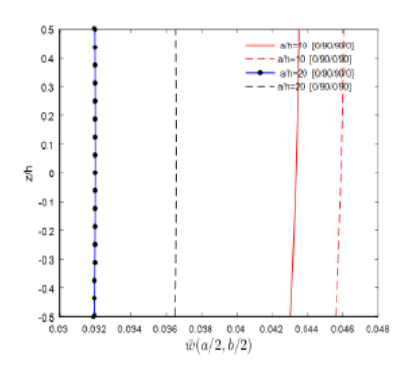


Indian Journal of Science and Technology
DOI: 10.17485/IJST/v16i38.1435
Year: 2023, Volume: 16, Issue: 38, Pages: 3177-3185
Original Article
Mahaboobali Nadaf1*, R J Fernandes2
1Assistant Professor, Department of Civil Engineering, Jain College of Engineering, Affiliated to Visvesvaraya Technological University (VTU), Belagavi, Karnataka, India
2Associate Professor, Department of Civil Engineering, SDM College of Engineering and Technology, Dharwad, An Autonomous college under Visvesvaraya Technological University (VTU), Belagavi, Karnataka, India
*Corresponding Author
Email: [email protected]
Received Date:12 June 2023, Accepted Date:07 September 2023, Published Date:09 October 2023
Background: Laminated composite plates find extensive applications across aerospace, military, civil infrastructure, and automotive industries due to their advantageous properties, including superior fatigue resistance, high strength and stiffness resulting in reduced weight, and customizable fiber orientation, materials, and stacking patterns. Consequently, it becomes imperative to conduct analyses of deflections and stress levels. Objectives: In this current research, a mathematical formulation based on the higher-order deformation theory (HSDT) is employed, featuring 12 degrees of freedom per node. The focus of the analysis involves studying stress and deflection in two-layer cross-ply laminate plates. The obtained results are then compared with established findings in existing literature. Furthermore, a parametric investigation is conducted, exploring different side-to-thickness ratios at values of a/h equal to 4, 5, 10, 20, 40, 50, and 100. Methodology: In this research, the finite element analysis was performed with HSDT using MATLAB software. A two-layer laminate with material properties from category 2 was employed. The deflection and in-plane stresses were subsequently compared to analytical solutions provided by Kant & Manjunath, Pandya & Kant, and Pagano. Findings: The non-dimensional deflection values for a two-layer cross-ply configuration under sinusoidal loading conditions are 0.2133 for an a/h ratio of 4 and 0.1220 for an a/h ratio of 10. Additionally, the non-dimensional in-plane stress values, when considering an a/h ratio of 10, are as follows: σx at the top fiber is 0.7202, σy at the top fiber is 0.0857, and τxy at the top fiber is -0.0543. Conversely, σx at the bottom fiber is -0.0879, σy at the bottom fiber is -0.7206, and τxy at the bottom fiber is 0.0546. Detailed results are presented in tables, and they exhibit a high degree of agreement with established standard results. Novelty: In the current analysis, the mathematical formulation incorporates 12 degrees of freedom per node, while a 9-noded rectangular element is employed for finite element meshing. A mesh size of 11 x 11 is utilized for the plate element. It's worth noting that these specific configurations have yielded highly accurate results, with errors of less than 10%.
Keywords Displacement, Stresses, Higher Order Shear Deformation Theory, Laminated Composite Plates, Finite Element Method
© 2023 Nadaf & Fernandes. This is an open-access article distributed under the terms of the Creative Commons Attribution License, which permits unrestricted use, distribution, and reproduction in any medium, provided the original author and source are credited. Published By Indian Society for Education and Environment (iSee)
Subscribe now for latest articles and news.